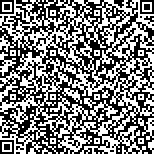| 本文已被:浏览 1203次 下载 810次 |

码上扫一扫! |
| 家庭功能特点与中职学生应激反应的相关性 |
| 诸秉根1,2*,孙芝琪2,任小丹2,潘先棣2,秦虹云1,赵旭东1,2 |
|
|
(1. 同济大学附属精神卫生中心(筹), 上海市浦东新区精神卫生中心, 上海 200124;
2. 同济大学医学院, 上海 200092
*通信作者) |
|
| 摘要: |
| 目的 探讨家庭功能及其各维度对青少年应激反应的影响。方法 选取95名中职学生(年龄16~19岁,男41名、女54名)作为被试,采用家庭功能量表评估家庭功能,采用流调用抑郁量表、状态-特质焦虑问卷及青少年自评生活事件量表评估当前精神状况及生活事件。采用特里尔社会应激测试(TSST)评估应激反应,全程分为基础状态(放松休息)、临场讲演和口算作业、恢复平静3个部分,于TSST前及TSST试验任务结束后 0、15、30 min采集被试唾液标本,用ELISA检测唾液中的皮质醇含量。结果 TSST前及TSST后0、15、30 min 4个时间点唾液皮质醇含量差异有统计学意义(P<0.05),表明本研究设计的TSST过程是成功的。TSST前及TSST后0、30 min唾液中的皮质醇含量与家庭功能中的沟通维度得分呈正相关(r=0.231、0.323、0.229,P均<0.05),而TSST后0 min的唾液皮质醇含量与情感反应维度得分呈正相关(r=0.261,P<0.05)。由TSST所反映的应激状况与被试年龄、性别、精神状态(焦虑、抑郁)、生活事件、父母社会经济状况(婚姻、经济、就业、文化程度)等无关。结论 成长于家庭沟通功能较差的青少年基础应激状态处于较高水平,而成长于家庭情感反应功能较差的环境下的青少年会出现较强的即时应激反应。 |
| 关键词: 青少年 家庭功能 特里尔社会应激测试 唾液 皮质醇 |
| DOI:10.16781/j.0258-879x.2021.03.0287 |
| 投稿时间:2019-09-03修订日期:2020-05-15 |
| 基金项目:卫生部心理疾患防治研究与示范项目(2009BAI77B05),上海市浦东新区卫生和计划生育委员会重点专科建设项目(PWZzk2017-20). |
|
| Correlation between family function and stress reaction of secondary vocational school students |
| ZHU Bing-gen1,2*,SUN Zhi-qi2,REN Xiao-dan2,PAN Xian-di2,QIN Hong-yun1,ZHAO Xu-dong1,2 |
(1. Mental Health Center Affiliated to Tongji University (in preparation), Shanghai Pudong New Area Mental Health Center, Shanghai 200124, China;
2. Tongji University School of Medicine, Shanghai 200092, China
*Corresponding author) |
| Abstract: |
| Objective To explore the influence of family function and its associated dimensions on stress reaction in adolescents. Methods A total of 95 secondary vocational school students (aged 16-19 years, including 41 males and 54 females) were selected. Family function was assessed by family assessment device (FAD). Current mental status and life events were assessed by center for epidemiological studies depression scale (CES-D), state-trait anxiety inventory (STAI) and adolescent self-rating life event checklist (ASLEC). The stress reaction was evaluated by the modified Trier social stress test (TSST). The whole process of TSST was divided into 3 parts:basic state (relaxation and rest), on-the-spot speech and oral arithmetic, and recovery of calm. Saliva samples were collected before TSST and 0, 15, 30 min after TSST, and salivary cortisol level was detected by enzyme-linked immunosorbent assay (ELISA). Results Significant differences were found in salivary cortisol levels among the 4 time points (pre- and 0, 15, 30 min post-TSST) (P<0.05), indicating that the modified TSST was successfully established. Salivary cortisol levels of pre- and 0, 30 min post-TSST had a significant correlation with communication dimension of family function (r=0.231, 0.323 and 0.229, all P<0.05), and salivary cortisol level of 0 min post-TSST had a positive correlation with affective reaction (r=0.261, P<0.05). Stress situations reflected by the TSST had no significant correlation with age, gender, mental state (depression and anxiety), life events, or socioeconomic indexes of parents (marital status, economic status, employment, and educational background). Conclusion Adolescents with poor family communication have a higher level of basic stress, and the adolescents with poor family affective reaction had stronger immediate stress reaction. |
| Key words: adolescent family function Trier social stress test saliva cortisol |
.jpg)
.jpg)